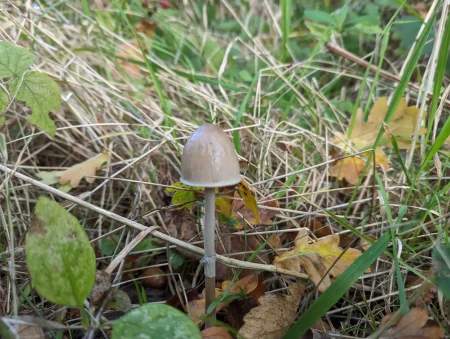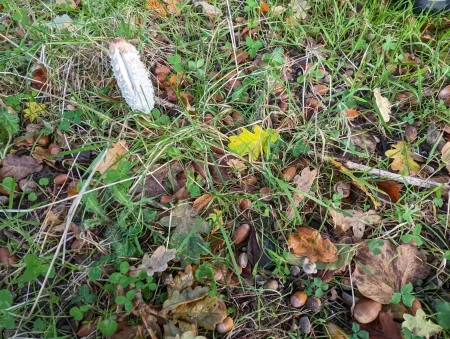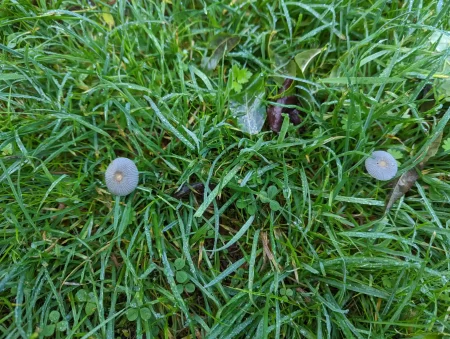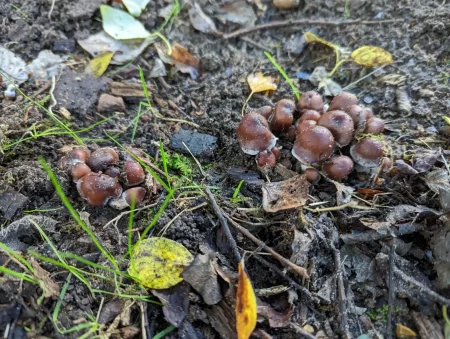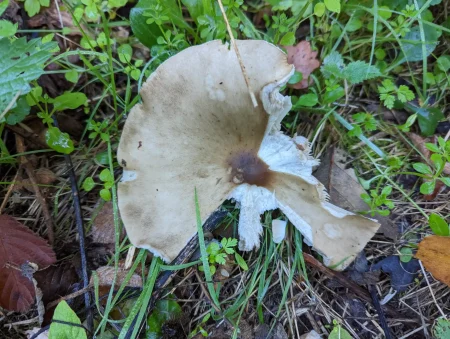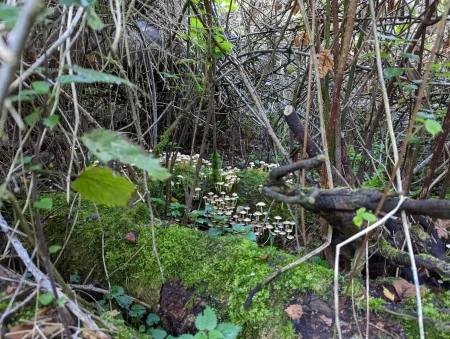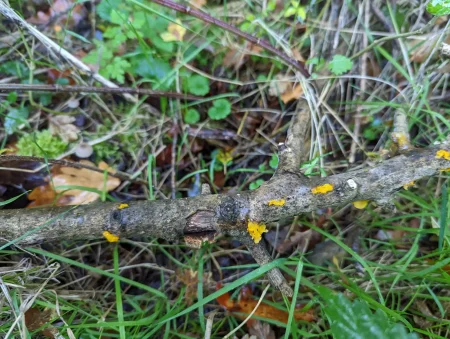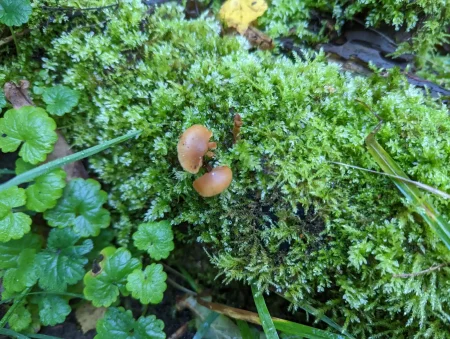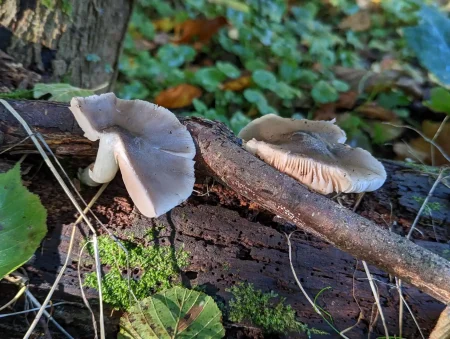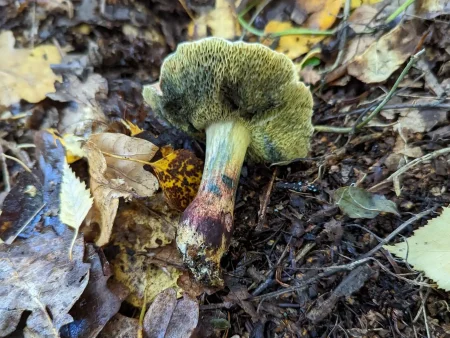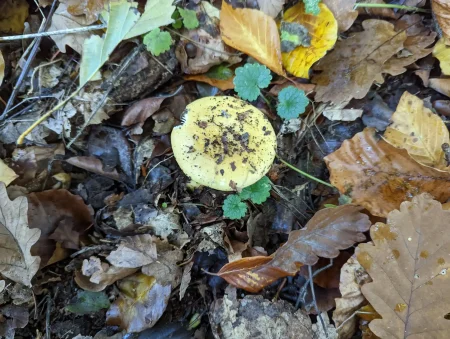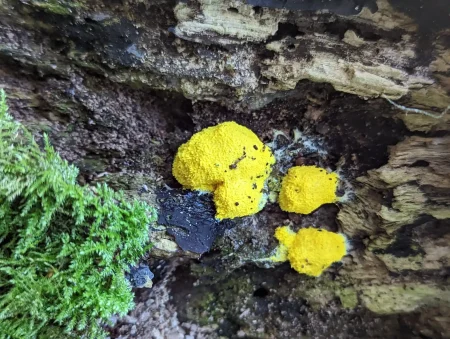The day was cool with a cold breeze; the sky was quite clear with a bright sun.
CAR PARK AND ENTRANCE AREA
At the junction of Low Road and Tinkers’ Lane leading up to the reserve, I spotted a tall brown fungus in the grass (Fig. 5.0) and five immature Coprinus comatus (Fig. 5.1).
At the main car park I found the decaying remains of the Coprinopsis atramentaria from week four and some Coprinellus disseminatus along the path to the railway crossing.
At Reception, I found very blackened Agaricus from previous weeks.
After entering the reserve, I found two Parasola plicatilis (Fig. 5.2) in tall grass and a little further along Stropharia from week four.
On the way to Basecamp I saw the same Tricholoma album from week four.
BASECAMP AREA
On the same log from previous weeks was a larger group of Tricholomopsis rutilans as well as the same large group of Laccaria laccata.
At the start of the Basecamp Loop, there was a cluster of a brown Cortinarius species (Fig. 5.3).
Nearby I spotted the Tubifera ferruginosa from week four where the remaining peach mass had turned brown.
I found a large beige species further along the path (Fig. 5.4), and then a group of Hypholoma fasciculare (Fig. 5.5) on a log under matted bramble.
Behind Basecamp, on the path to the railway line, I went to visit the ivy covered tree stump that was covered in Psathyrella piluliformis.
In the vicinity I found some Tremella mesenterica (Fig. 5.6) and some orange fungi covering the nearby mossy logs (Fig. 5.7).
THE DELL
Xylaria hypoxylon (Fig. 5.8) was widespread throughout the Dell.
On the side of rotting wood, I spotted the slime mould Ceratiomyxa fruticulosa (Fig. 5.9) and trooping on the tops of the logs were Mycena galericulata (Fig. 5.10).
In a dark area under a low canopy I found what looked like an immature Amanita phalloides (Fig. 5.11).
At the raised edge of the Dell, I saw a large green capped species (Fig. 5.12) and nearby, some bolete fungi parasitised by Hypomyces chrysospermus (Fig. 5.13).
Under a woven branch circle, I spotted two bolete fungi (Fig. 5.14) and I saw a few Xerocomellus (Fig. 5.15).
I also found Mycena rosea in two major groups, where I had previously found some on Day 4.
Xylaria hypoxylon
The Dell
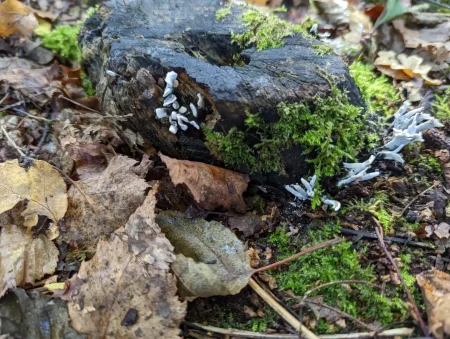
Figure 5.
Ceratiomyxa fruticulosa
The Dell
Figure 5.
Mycena galericulata
The Dell
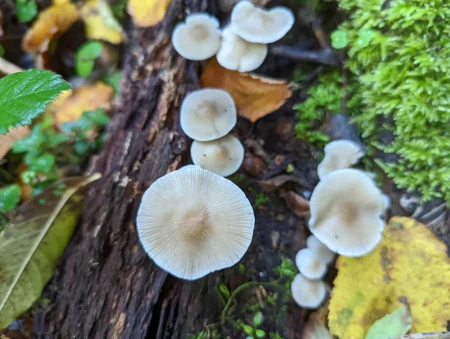
Figure 5.
Amanita phalloides
The Dell
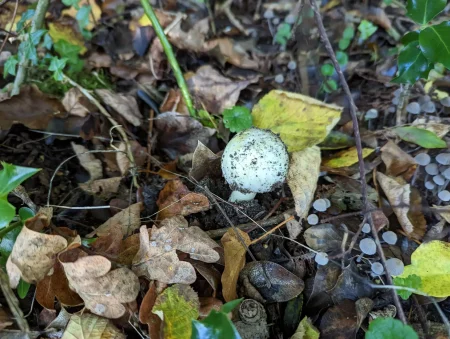
Figure 5.
Unidentified
The Dell
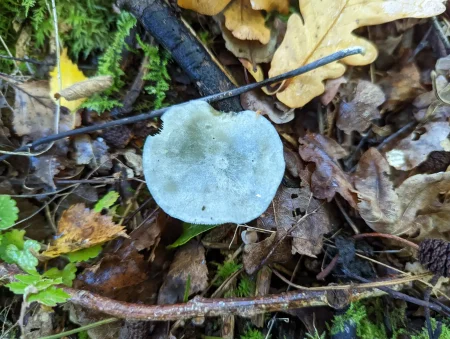
Figure 5.
Hypomyces chrysospermus
The Dell
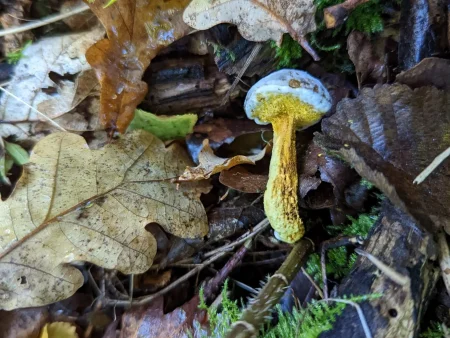
Figure 5.
Unidentified
The Dell
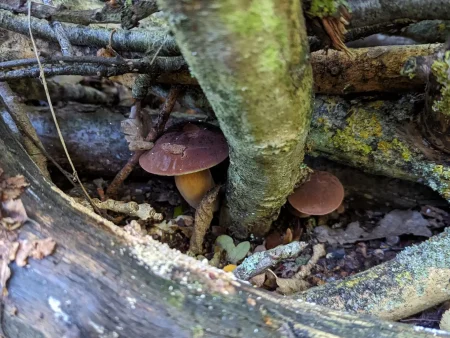
Figure 5.
Xerocomellus species
The Dell
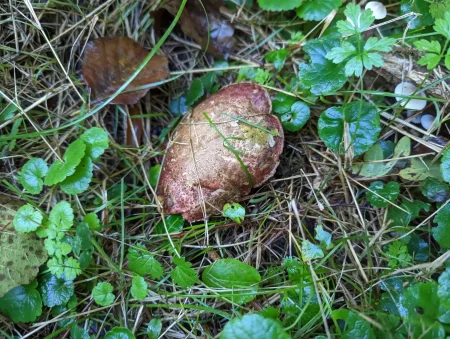
Figure 5.
ENCLOSED AREA
In the wooded area at the end of the drainage channel, I found another Leccinum scabrum (Fig. 5.15).
An exiting discovery was white Clavaria (Fig. 5.15) as well as a an orange Clavulinopsis luteoalba or Clavaria amoena (Fig. 5.17) and the “stalk” fungi we had seen some years ago on a visit to the reserve — later identified as Typhula juncea (Slender Club) (Fig. 5.18) — were growing in this wooded area.
In this wooded area I also found a purple fungus with yellow fur — possibly juvenile Armillaria — which we later found all over the Fen, and a now fully red Picipes badius.
Clavaria species
The Enclosed Area
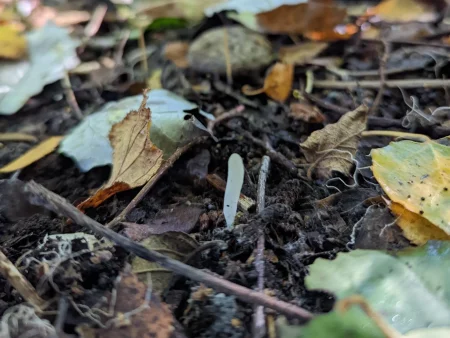
Figure 5.
Clavulinopsis species
The Enclosed Area
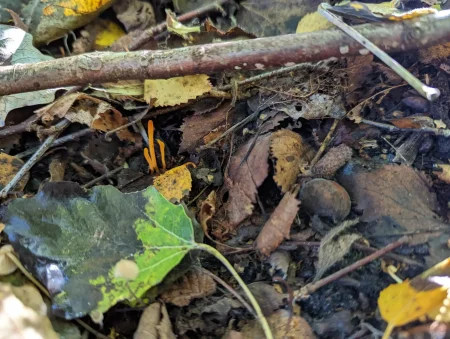
Figure 5.
Typhula juncea
The Enclosed Area
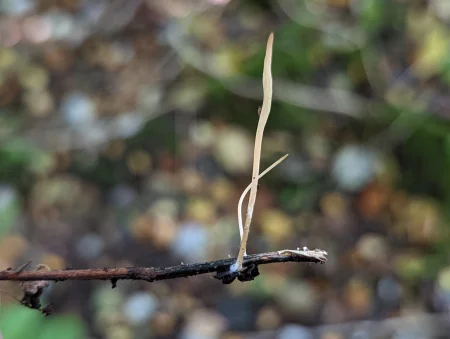
Figure 5.
Leccinum scabrum
The Enclosed Area
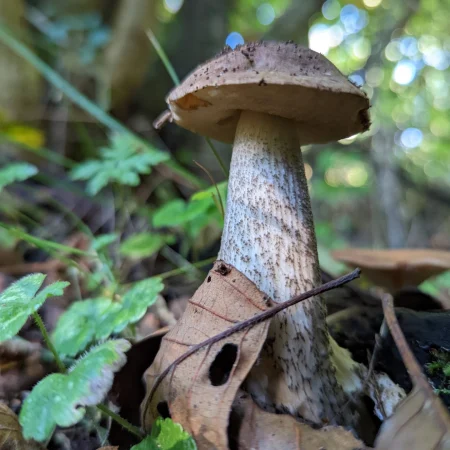
Figure 5.
YEW GROVE AREA
Continuing along the woodland trail, I saw a grey capped, pink fleshed fungus (Fig. 5.19) and a flock of a pink furry fungi, which may have been fully matured Armillaria fungi.
OUTPOST AREA
At The Outpost I saw the broken remnants of the Amanita Muscaria from week four.
Back on the trail, I saw a few more Auricularia auricula on the same log as in week two.
I also saw another Xerocomellus species (Fig. 5.20).
TRAIL END AREA
On the way to check on the the Phallus impudicus eggs from week four — they were still in their egg form — I saw some small Fuligo septica (Fig. 5.21), followed by a yellow Russula ochroleuca (Fig. 5.22).
